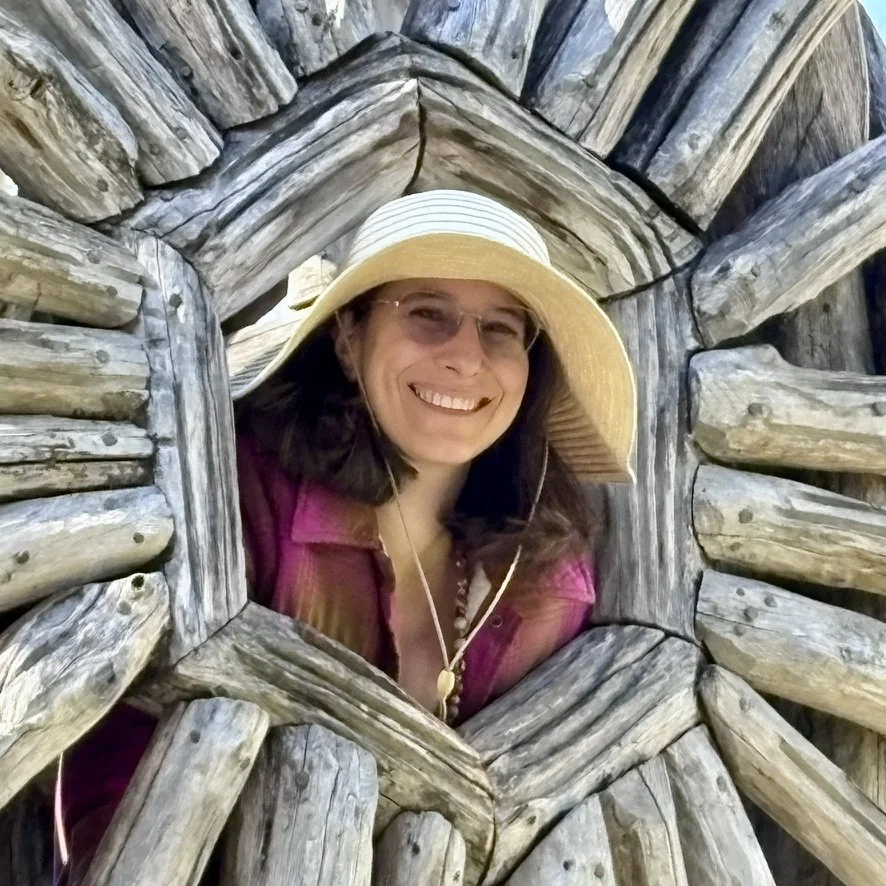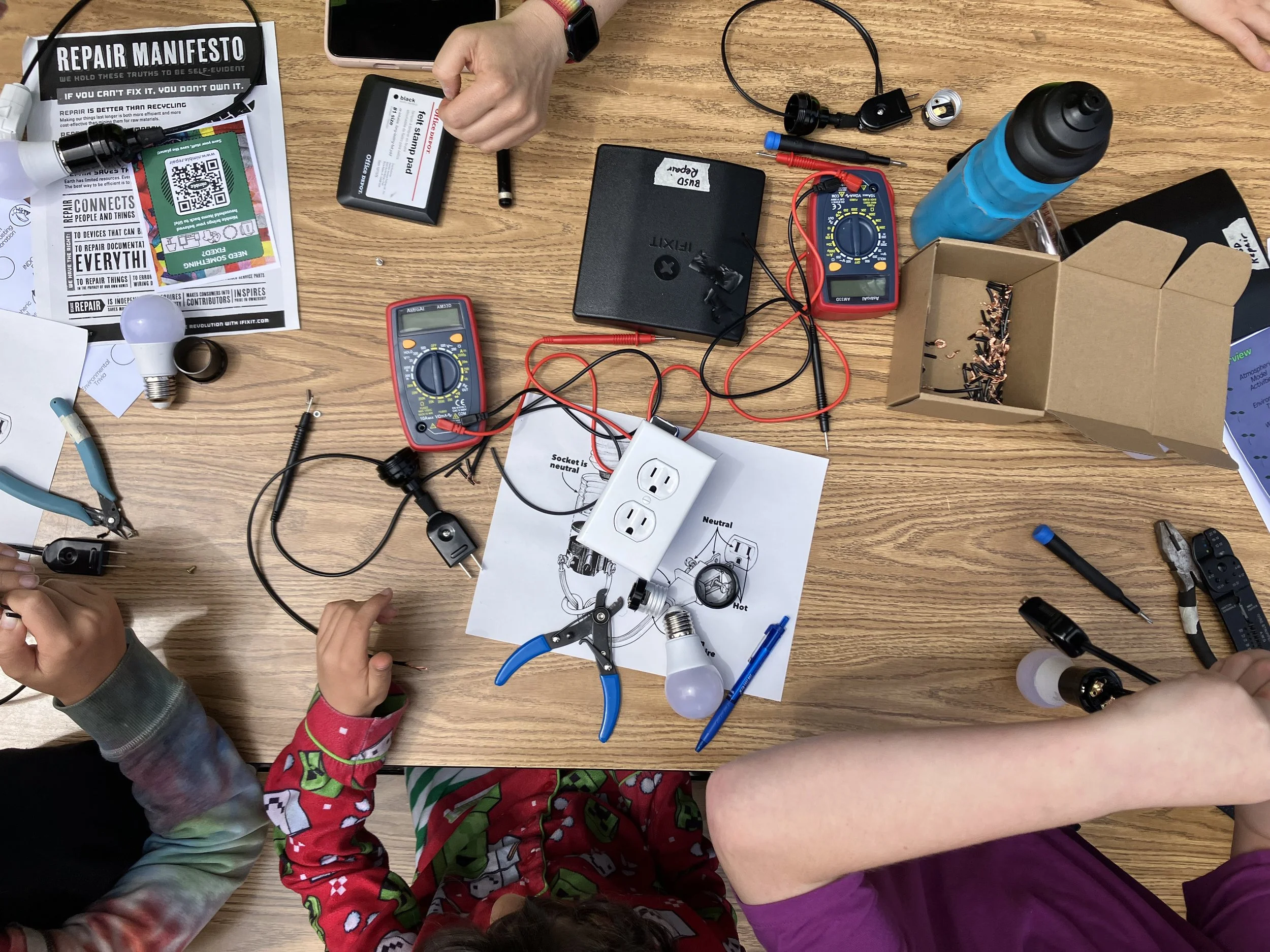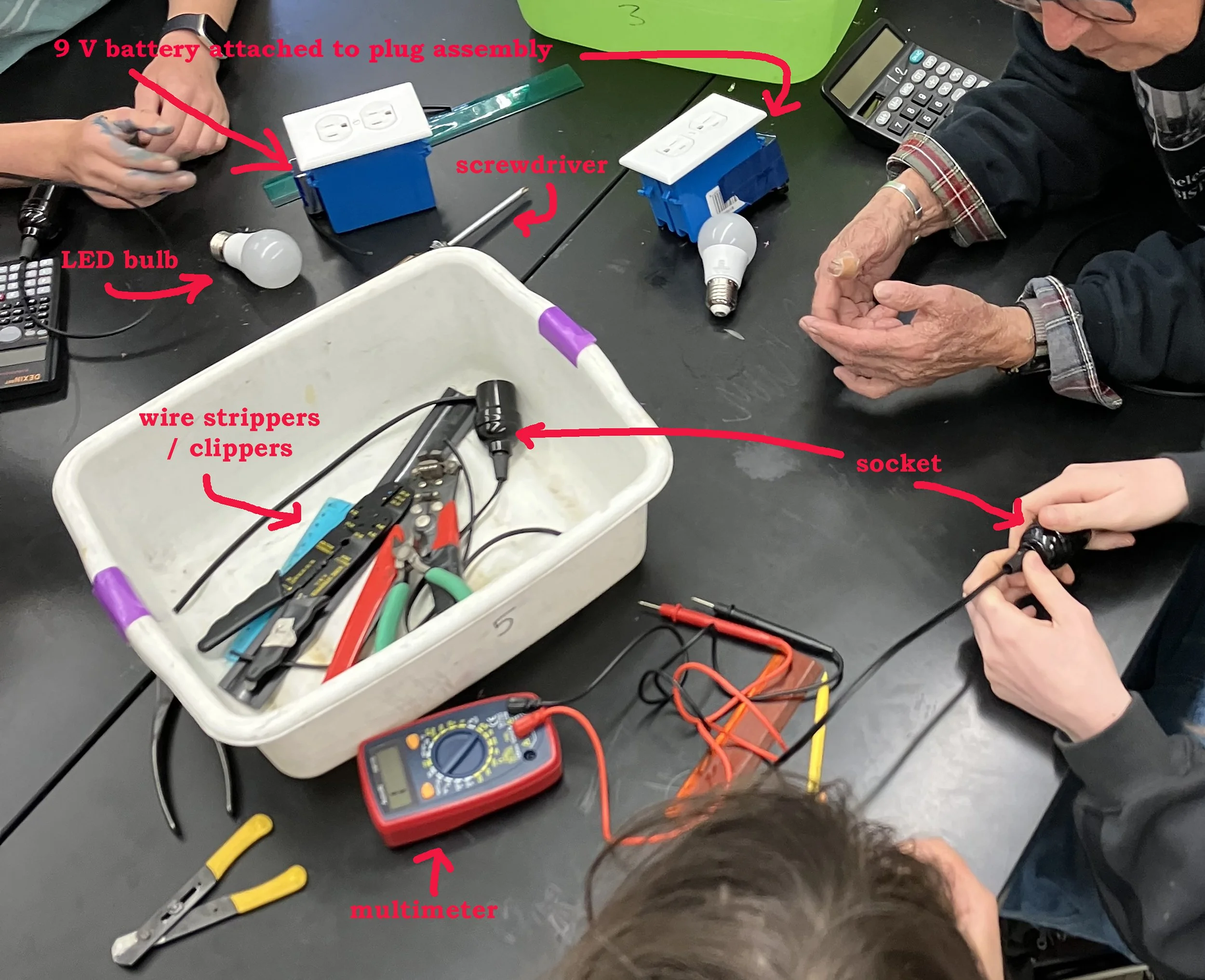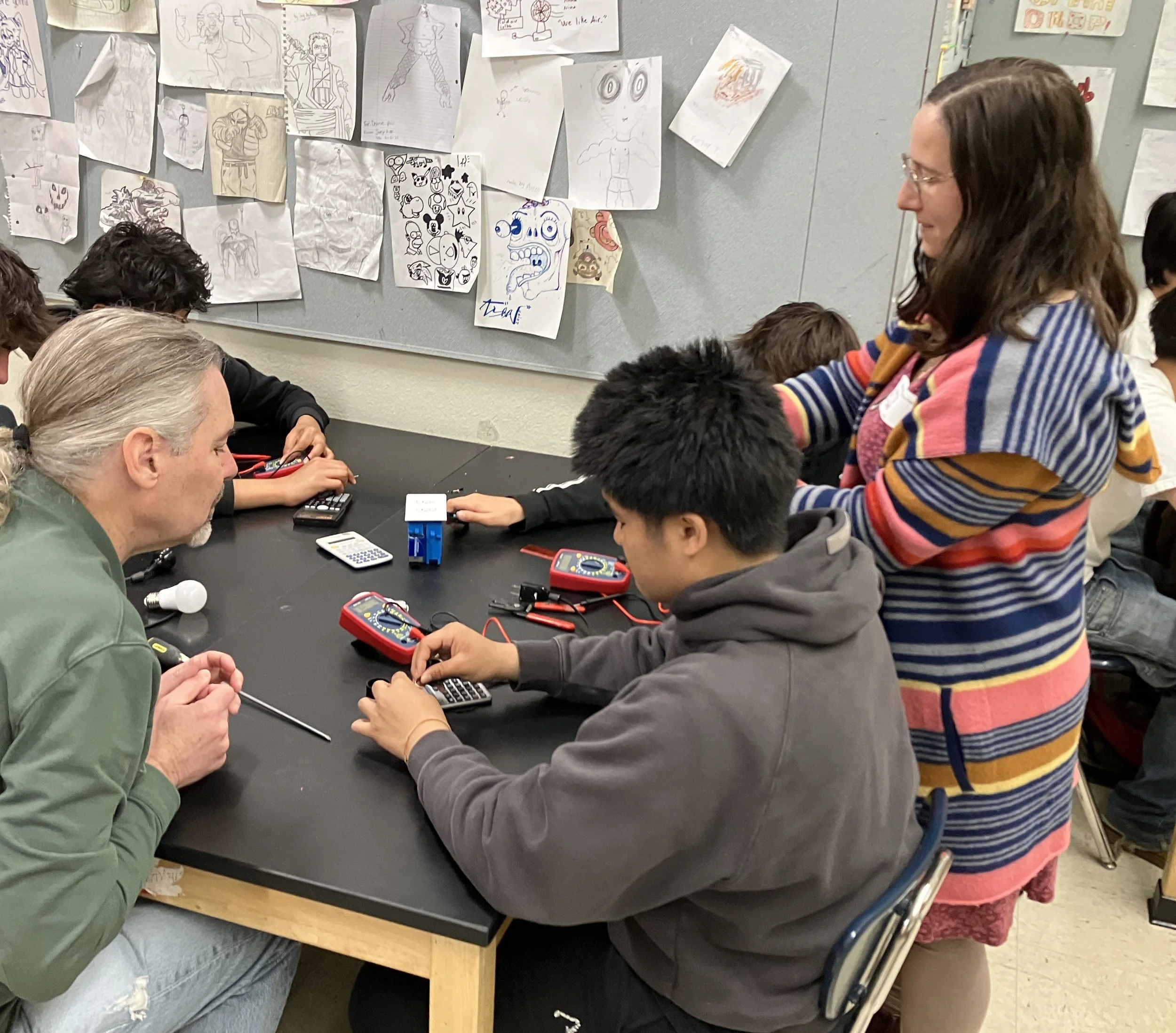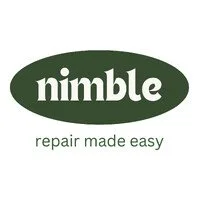August 2025
Empowering Students through Hands-On Lamp Repair
We sat down with Kimberley Schroder to talk about her experience teaching lamp repair at Berkeley High School’s 2025 Climate Conference, and about teaching about repair more generally. The Note that follows was gleaned from that wide-ranging conversation.
Kimberley’s summary observations were:
Workshops like “Learn About Electric Circuits!" demonstrate that repair brings critical thinking, real-world problem-solving, and basic physics concepts into the classroom in an engaging way, while at the same time making space for urgent conversations like caring for the environment.
Such workshops also demonstrate the invaluable role repair advocates play in advancing teaching our youth about repair in educational settings.
We all know the feeling of turning on a lamp, only to see … dark. When changing the bulb doesn’t work, what next? For Berkeley High School 9th graders the answer was learning to repair lamps themselves.
Kimberley D.C. Schroder is the founder of Nimble Repair, a repair request service operating in the San Francisco Bay Area, California. In April 2025 she led students at Berkeley High School through a hands-on repair workshop during Berkeley Unified School District’s annual Universal Ninth Grade Climate Conference.
BHS educator Zia Grossman-Vendrillo explained that the day-long event was “the culmination of a week of climate learning in ninth grade core classes. Students then had the opportunity to explore climate solutions through hands-on workshops from local experts.” Workshops that day ranged from Climate Storytelling to Creek Restoration, and included both Clothes Mending and Lamp Repair.
Students working with Kimberley at the BUSD Climate Fair in April 2025
Designing the Workshop Experience
Kimberley was invited by Berkeley Unified School District retired teacher Martha Cain to teach a repair workshop on electronics. Rather than having students bring in their own electronics – which any community repair event organizer knows can present a wide range of repair challenges – Kimberley focused on one easily-standarized fix: lamps.
Kimberley knew to tap into her repair network for help. She attended a “Shop Talk” hosted by Repair Economy Washington. There, she met Wayne Seltzer who designed the “Teaching Lamp Repair Kit” and leads the Boulder, Colorado U-Fix-It-Clinic. They then connected via Global Fixit Clinic Discord channel.
Cindy Navarro teaching lamp repair at Berkeley High School’s 2025 Climate Conference
Inspired by Wayne’s lamp repair kit, Kimberley and community volunteer Cindy Navarro prepared the standardized lamp repair kits. Each kit included one simple lamp – cord, socket, plug, 12V bulb, and 9V-battery-powered outlet, as well as shared tools – multimeter, screwdriver, wire cutter, and wire stripper. (Check out the kit in the Educator Resource Library.)
Cindy assembled components into simple, operational “lamps” and table-top outlets, then each lamp assembly was strategically “broken” in a way that was not readily apparent, but required disassembly and exploration to find a snipped wire inside either the plug or the socket. One kit served two students, and a community volunteer oversaw and offered guidance to two to three pairs of students (lower ratios are preferable).
The standardized kits and clear instructions made the activity repeatable without requiring anyone to have specialized electrical knowledge – students and volunteers alike. Members of the local Fixit Clinic / Repair Café volunteer community helped out, but experienced students such as members of the Berkeley High School Robotics Club could equally well have supported the activity.
Components of the lamp repair kit
Kimberley wanted students to gain practical hands-on repair skills and to walk away understanding how repair contributes to caring for the environment. As a former science educator and community organizer, she knew the workshop needed to be engaging.
She started each workshop by introducing the components of a lamp and how it works, as well as the tools students would use to make the repair. Kimberley also covered a broader discussion about the value of repair in waste reduction and the Right to Repair movement. She demonstrated each step: opening lamps, stripping wires, and reattaching them.
“My objective is to help students realize that repair is a viable activity that they themselves can do.” – Kimberley D.C. Schroder
The main goal was simple – to show that repair is possible in general, and that students themselves are capable of making basic repairs. Lamps were ideal because the results were immediately gratifying – the bulb lights up when the fix is complete! At the end of each class, students “broke” the lamp again by cutting a wire so the next workshop session would encounter a broken lamp assembly.
Powering Up
As is the case with all educational experiences, introduction to new tools and concepts requires teaching at a pace that doesn’t leave anyone behind, while at the same time keeping faster-paced learners engaged. After the first workshop, it became clear that explaining basic concepts like “righty-tighty, lefty-loosey” were necessary for some students, and were thus quickly added to the slides.
Kimberley and a community volunteer teaching lamp repair
Another key insight from the day was the value of showing all steps upfront and cutting students loose to make their repairs, rather than trying to lead the whole class together through each step. Presenting the full process at the start of the workshop allowed some students to finish the fix and then experiment independently, while others could follow along with volunteers at their own pace.
Kimberley mentioned that there’s an opportunity to include additional discretionary activities for more advanced students who finish quickly, such as adding a switch into the line. Alternatively, students could help their less-experienced peers.
To introduce the concept of electricity, Kimberley brought in an interactive tool – the energy stick. This simple device sounds and lights up when electricity flows through it, providing a palpable way to demonstrate open and closed circuits. Students learned that electricity needs a continuous path to flow, and that materials like metals – and even the human body – can conduct electricity.
Turning this into a (literal) hands-on activity, students stood in a circle. When all students held hands, the energy stick lit up showing that electricity was flowing through the group. Breaking the circle by releasing hands made the stick go dark, thus tangibly and memorably demonstrating a generally invisible concept of electricity: the complete circuit.
Students were then prepared to bring their knowledge of complete circuits to diagnosing and repairing lamp assemblies.
The Role of Community Advocates in Bringing Repair into the Classroom
Schools are almost universally resource-strapped. Introducing new topics into schools – like repair – often requires the low-to-no-cost support of repair advocates. This workshop was no exception – the Berkeley-based repair community turned out.
Volunteers for this event ranged from Repair Café and Fixit Clinic coaches, to retired educators, including a former Berkeley High School Shop teacher. Specialized electrical knowledge wasn’t necessary as the standardized kits and clear instructions allowed volunteers to support students effectively with minimal orientation, and the low-voltage kits presented zero risk for electrocution.
Kimberley teaching in action!
Throughout the day students responded enthusiastically, learned skills, and gained a sense of accomplishment. The 9th grade Climate Conference coordinator invited Kimberley to return next year, underscoring the workshop’s success.
The Culture of Repair Project hopes that an ever-increasing number of repair advocates turn out to support teaching about repair in educational settings, and that computer science, robotics, physics and maker classrooms can be points of entry. Kimberley could also see integrating repair into physics lessons aligned with educational standards.
Workshops like “Learn About Electric Circuits!" (the final slide deck Kimberley developed) demonstrate that repair brings critical thinking, real-world problem-solving, and basic physics concepts into the classroom in an engaging way, while at the same time making space for urgent conversations like reducing waste and shifting our relationship with stuff. Such workshops also demonstrate the invaluable role repair advocates play in advancing teaching our youth about repair.
Resources mentioned in the Note above can be found in the Educator Resource Library:
Teaching Lamp Repair Kit
Learn About Electric Circuits
About Kimberley and Nimble Repair
Nimble Repair began as Kimberley Schroder’s graduate school capstone project and, over the last year, she’s turned it into a full-fledged business. Nimble makes it easy to repair household items by connecting people with local “repair artists.” Clients simply visit Nimble’s website, provide information about what needs fixing, and the Nimble team handles matching each item to the right repair expert, pickup, and delivery. Kimberley continues to learn alongside her network of repair artists, attending Fixit Clinics and working with the Bay Area community to expand what’s possible in repair.
Nimble Repair is available for consultation on assembling the Lamp Repair Kits, and/or teaching the Learn about Electric Circuits! workshop described above. Further, Nimble is seeking to bring workshops like this and other forms of teaching basic repair skills (jewelry, clothing) to more settings, from schools and community events to corporate team building experiences. Contact: hello@nimble.repair.
